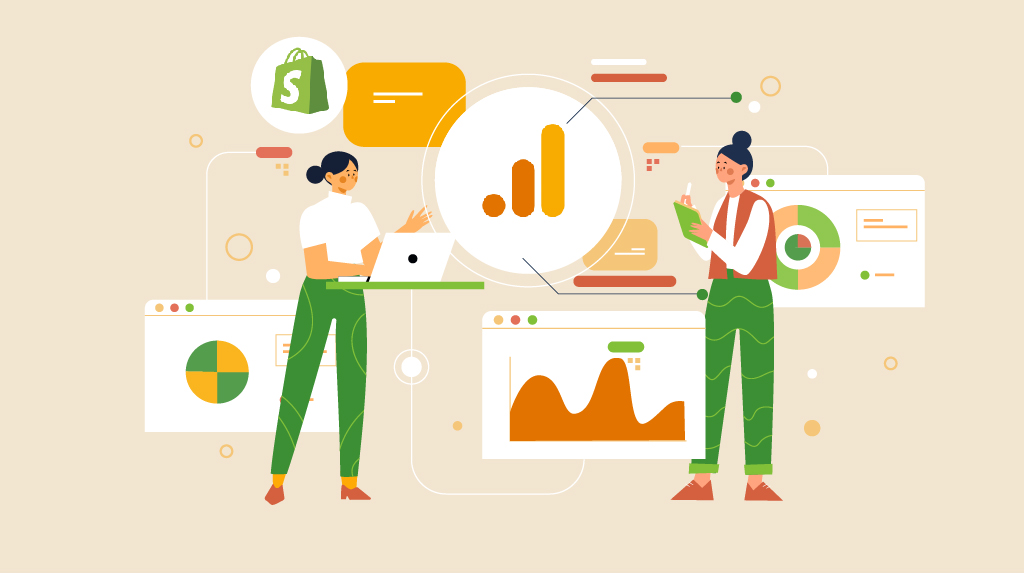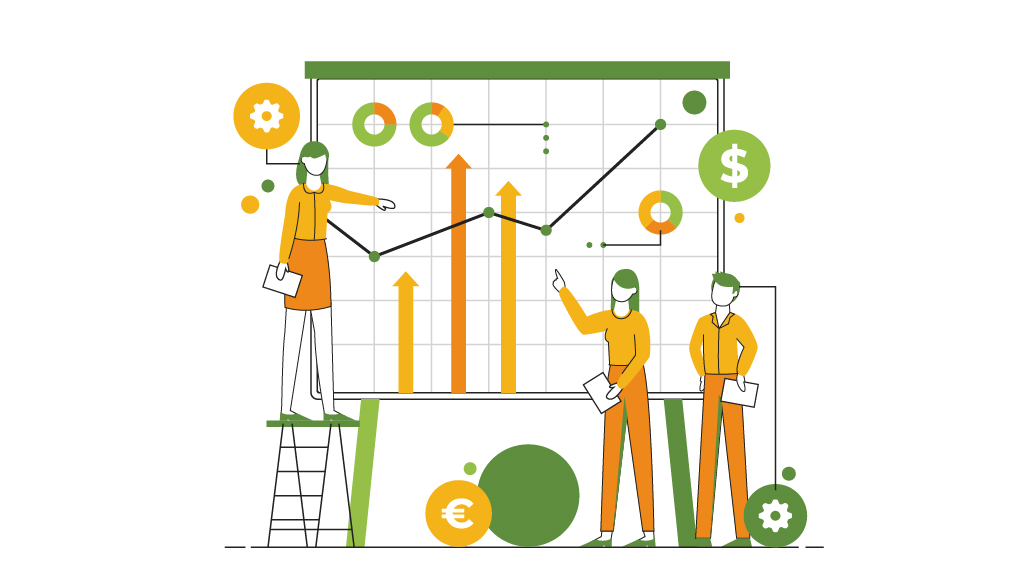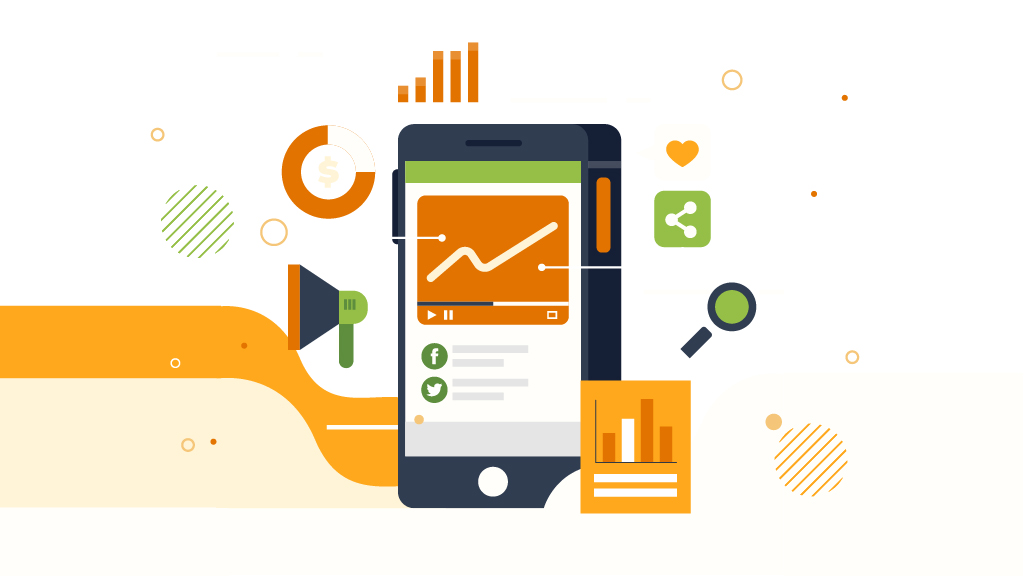Shopify is an all-in-one e-commerce platform with content management system functions used by small, medium and large businesses all over the world. Any businesses centred on e-commerce cannot see customers. So, a web analytics report is essential to understand how your online store works for prospects. Having web analytics is indeed a vital thing before commencing your online business store. GA4 Shopify is an excellent choice e-commerce entrepreneurs make today. In this article, we will explore more on how to add ga4 to Shopify in a matter of clicks, let’s get started.

Google Analytics & Shopify
Performing a successful Shopify GA4 integration process helps to get a full picture of website performance and other parameters. Even though Shopify comes with its own in-house analytics called Shopify Analytics, and offers finance reports, sales analysis, acquisition reports, etc. Google Analytics offers a much more advanced set of tools and the tightly focused reports generated add value when it comes to sales.
GA4 Shopify has tremendous advantages for your business as its reports provide insight into revenue and sales. GA4 is the current version of Google web analytics which replaced Universal Analytics on July 1, 2023.
The complete package of GA4 for Shopify was launched in March 2023 and now it supports server-side data collection for extra control and security. Besides, a full suite of tool integrations and powerful reporting options are available. The key features of Google Analytics 4 described below help enhance your online store’s tracking capabilities.
- Roll-up report built-in
- Robust cross-device tracking
- Automatic event tracking
- A new set of metrics to track engagement
- Flexible and complex conversion tracking
- Predictive analytic capabilities
- Improved data visualization capabilities
- Granular control over data expenditure
- Faster data processing
- Provisions identity spaces beyond cookies
Setting up GA4 for Shopify
Creating a Google Analytics property is a vital thing before commencing your online store. First, your business needs to have a Google Analytics account and then link the Google Ads Account. Shopify GA4 integration allows you to take care of core business tasks without hassles such as monitoring campaign performance, and tracking conversion funnels and sales. It is a lens for tackling many business challenges. For a successful Shopify GA4 integration, you need to follow the below steps:
Create a Google Analytics account
The first step to add ga4 to Shopify is to create a Google Analytics account where you must set up a GA4 property. For creating one, you must already have a Google account created. If you already use one for Google’s services or ad campaigns, that account can be used for analytics as long it isn’t your personal one. After successfully creating a Google Analytics account, head over to the next step.
Create a Google Analytics 4 property
To enable GA4 Shopify, a Google Analytics 4 property must be created and added to your Shopify store. After creating the property, the next step is to create a web data stream. Upon completing this step, you will have received a unique tag ID, which is important for the next step, therefore, make a note of that.
Add the required GA4 tags
During setting up GA4 tags, if you don’t have Google & YouTube app, you will be prompted to install them. Follow the below steps to add the GA4 tags:
- Log into your Shopify account & go to Online Store> Preferences.
- Click the “Manage pixel here” option in the Google Analytics section.
- Click Connect your Google account.
- Choose the Tag ID for the GA4 property that must be connected to your store.
- Click Connect your Google Analytics 4 property

After GA4 Shopify tags are set up, you can link the newly created Google Analytics property to your Google Ads account. This step is important as it helps analyze customer activity on your Shopify store which can be used to build audiences & track conversion actions. To know more about linking GA4 property to a Google Ads account, click here.
Track additional events using Google Analytics 4
If you follow these steps as mentioned, this will result in a successful Shopify GA4 integration process. Once that happens, the following e-commerce events are tracked automatically.
| Event name | Event description |
| search | When a product is searched by a customer |
| page_view | When a customer visits a specific page. |
| view_item | When customers view your products |
| add_to_cart | When products are added to the cart |
| add_payment_info | Successfully entering payment information. |
| begin_checkout | Beginning the checkout process. |
| purchase | Completed purchasing the product |
However, if you want to track additional events on your store via GA4, editing the theme code and using the gtag.js API, you can send the events to your Google Analytics account. That’s not all, by adding scripts to the checkout settings in your Shopify admin, you can also track various post-purchase events too. To know more about event tracking in detail, check out this link.
GA4 Migration Process
If you are already using Universal Analytics audiences, you can migrate them to GA4 without much difficulty. In fact, you can do that by checking out our step-by-step guide for Shopify GA4 integration. However, you must beware of the automatic transfer as it may contain errors during migration. Manual transferring might also contain errors but you can correct them easily compared to automatic transfer in the GA4 view. Disabling auto transfer is possible by following the step-by-step instructions as follows:
- Select admin in Google Analytics – select Universal Analytics property from the correct account- select GA4 Setup assistant from the property column – turn off automatic setup.
- Make sure the data storage time is two months as it is the maximum time limit.
- Select tasks and the resources your website requires while creating and structuring an account.
- Go through the events; you can set add-on parameters and determine the events.
After following these steps, if you still require additional expertise, you can consult with the best GA4 Shopify migration services for your business.

Winding up
GA4 has changed how we look at our data and deep analysis. Tracking online activity in one go changes our perception of our data and thus helps improve the user experience for end-user. Installing GA4 Shopify provides you with many advantages such as the capability to have complaint data collection as well as be vigilant at data trends for the end-user. Being an e-commerce entrepreneur, you need to track the phases of customers’ journey after they enter your online store and this is only possible if you add ga4 to Shopify. Your data-driven insights with GA4 have immense potential to leverage your business to the next level.
Related Post
Publications, Insights & News from GTECH








